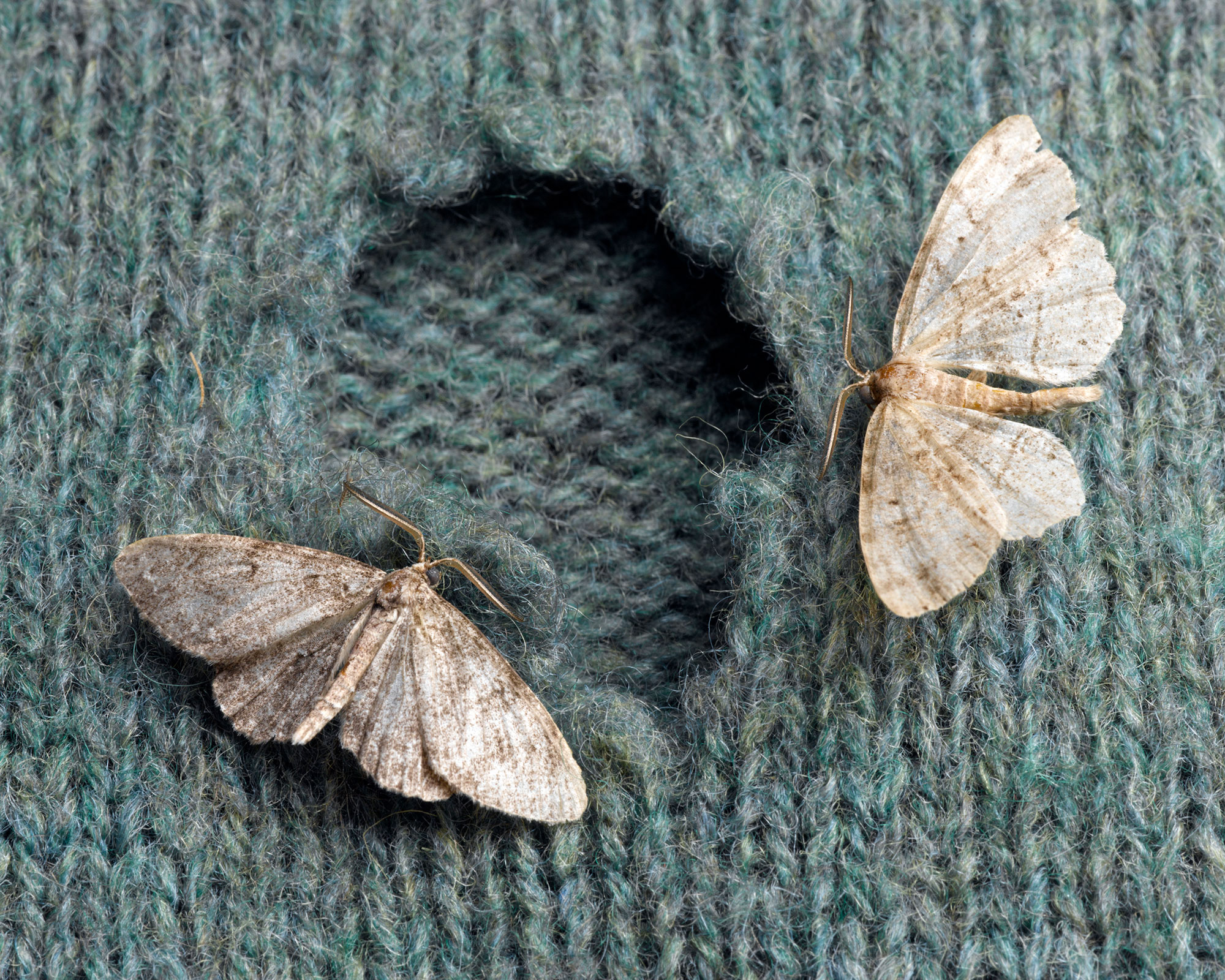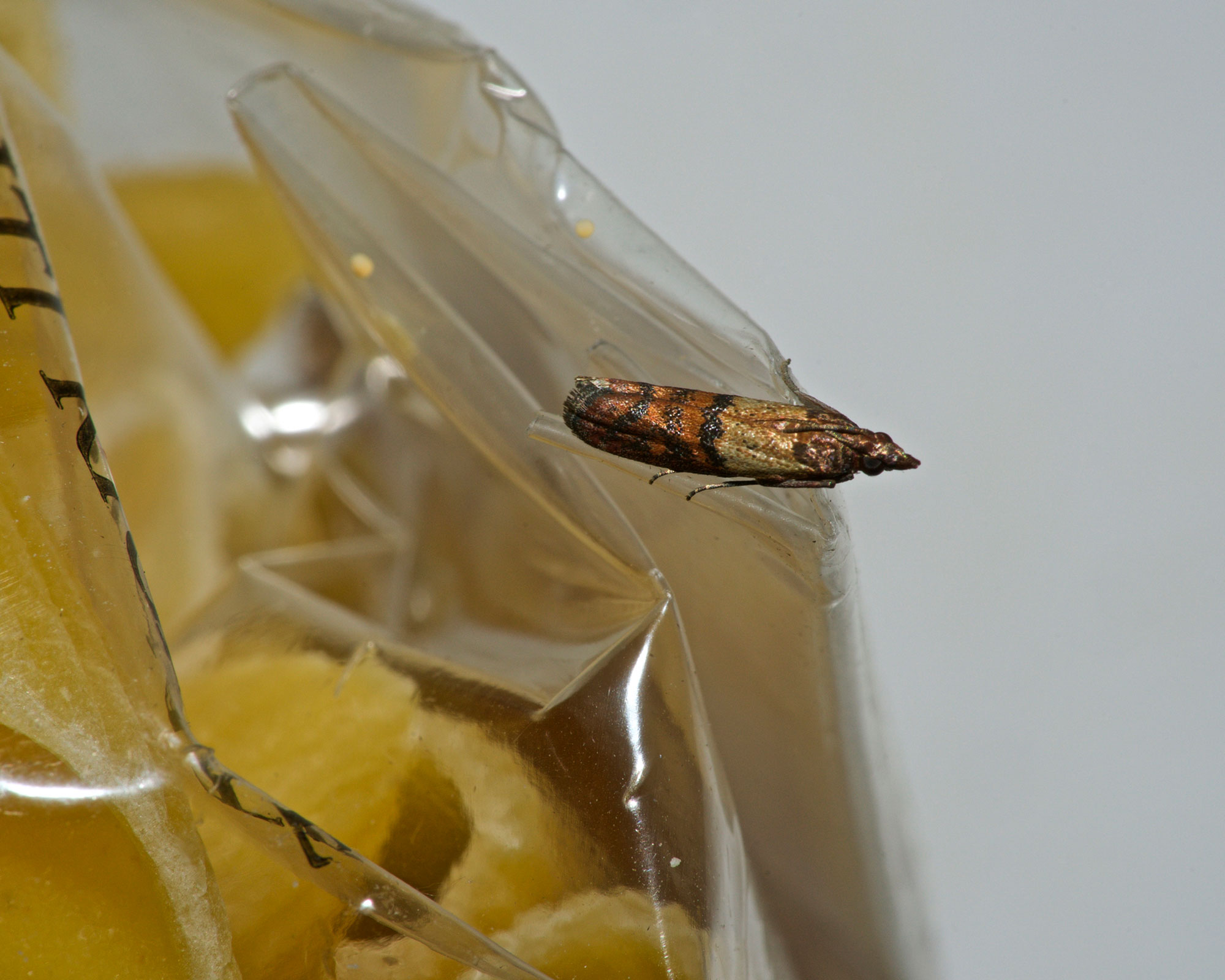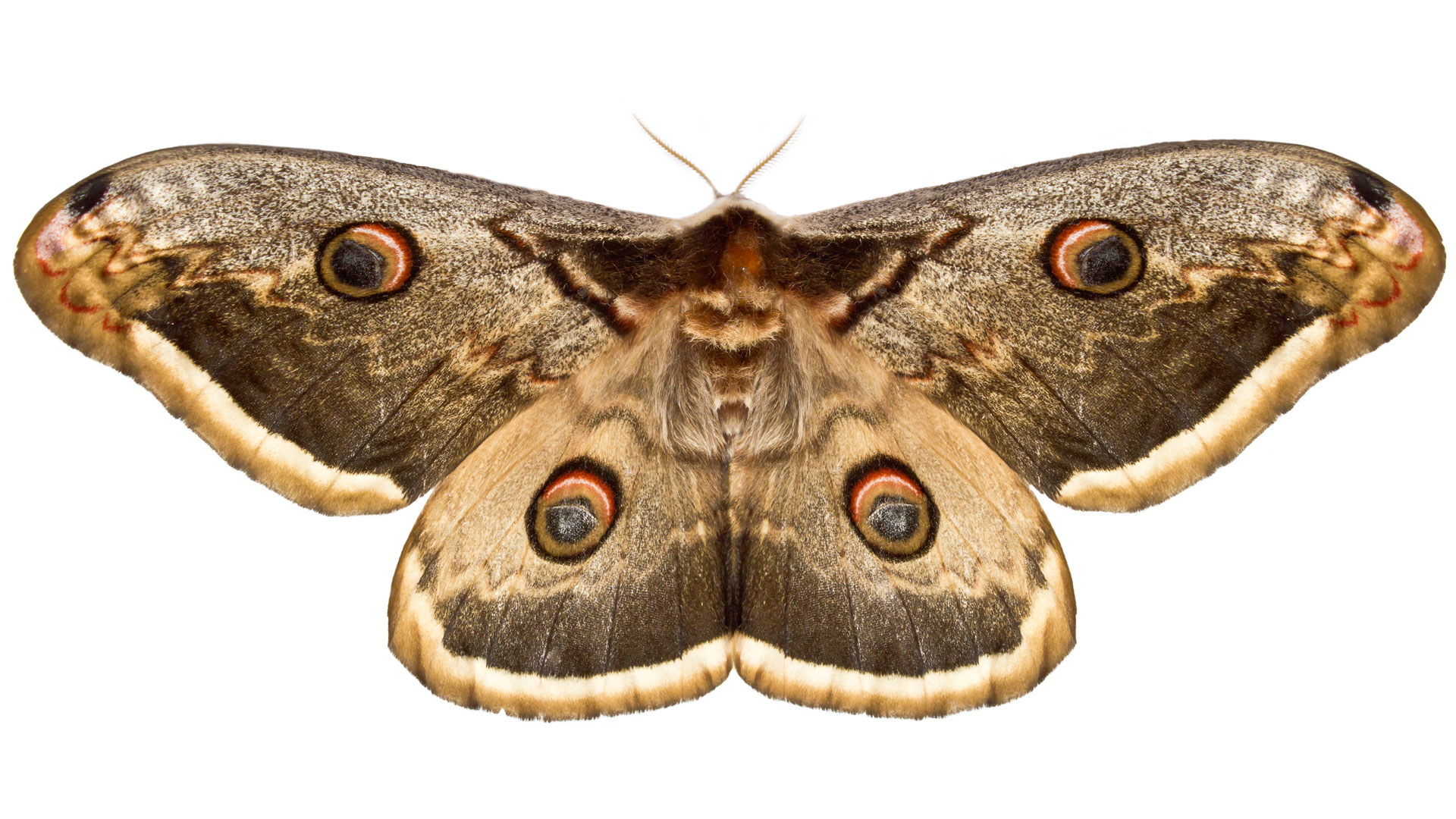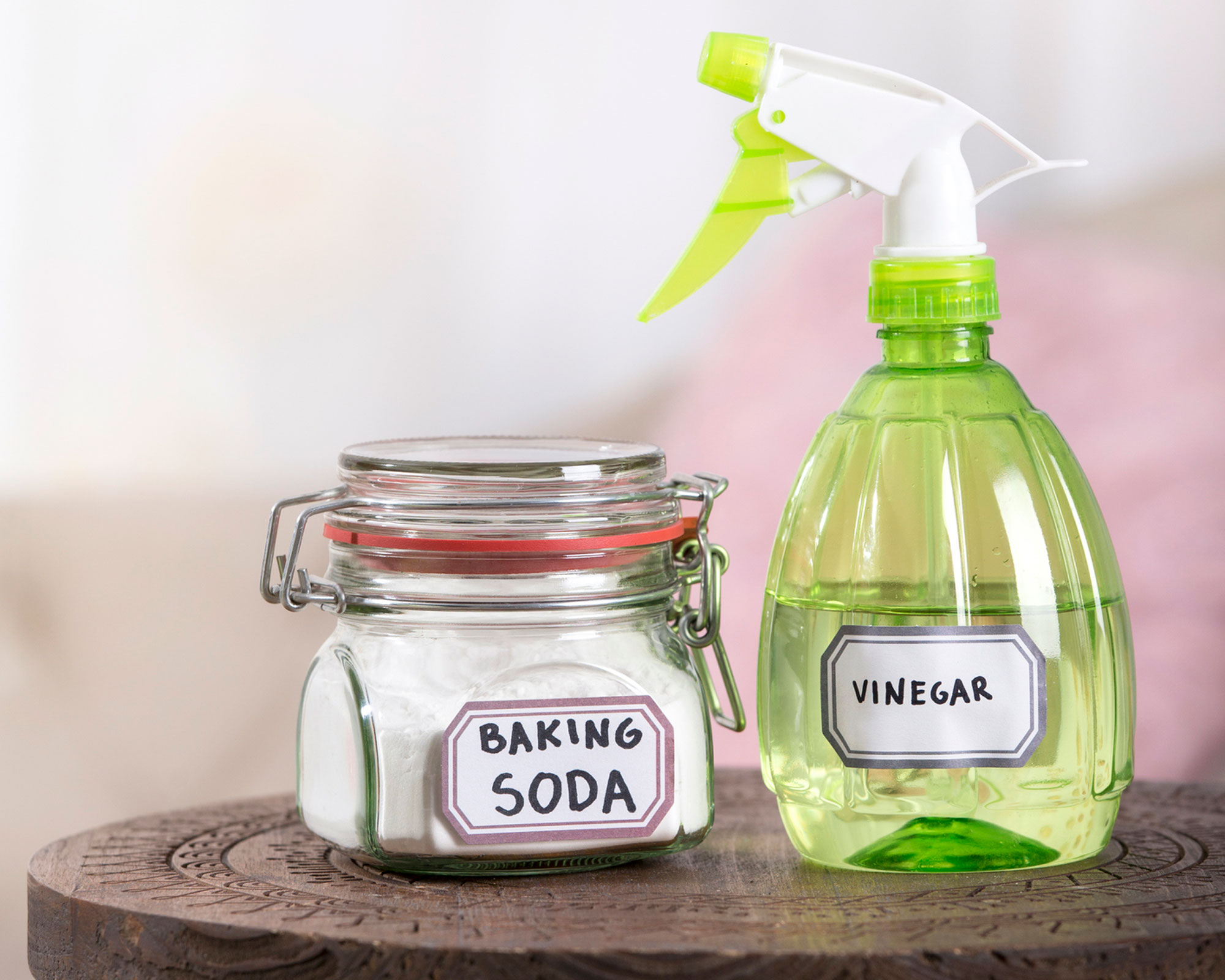

Moths can do some serious damage, from gobbling up your favorite jumpers, silk garments, and carpets, to infiltrating your pantry and wreaking havoc in grains and flour. So, if they are a blight on your home, our guide on how to get rid of moths is the best place to start.
First, you want to make sure you know what you are dealing with. Are they moths or something else? In which case you might need to double check our guide to how to get rid of flying insects to make sure what pest you are dealing with.
Once moths are identified to be the culprit, you then need to find out what type they are to match to the right remedy.
So where might you find moths?
Martha Stewart describes their favorite hiding places on her blog:
'Moths live in dark, undisturbed areas such as closets, basements, and attics, and tend to gravitate toward the corners or folds of fabrics.'
There are varying reasons why moths want to get into your cupboards; some prefer your closet where your most prized garments are hanging, like the common clothes moth, while others are more interested in your food produce, specifically the pantry moth.
Get small space home decor ideas, celeb inspiration, DIY tips and more, straight to your inbox!
It's true that pesticides are effective against moths, and you can buy a variety of moth-repellent sprays, as well as more traditional moth ball type products that release insecticide over time, but smell just awful.
There are, however, health risks associated with their use indoors, and they are always harmful to pets. If you can find a way to evacuate your whole family from the house during and after professional pest control, then it could be an option. But you may choose to try DIY methods before resorting to the pesticide option.
Types of moth and the typical signs
Wardrobes, closets and pantries provide an ideal habitat for hungry moths.
The UK has four species of these pests commonly found in homes, and they each have their own material preferences – meaning their larvae cause slightly different damage to fabrics and materials. While the most common types in the US include the brown house moth, the pantry moth, and the clothes/carpet moth.
Here are the typical moths and what they like to eat:
- Common clothes moth larvae cause irregular-shaped holes in fabrics and have expensive tastes, opting for natural fabrics like cotton, silk and cashmere.
- Case-bearing clothes moth larvae create smaller, more regular-shaped holes.
- Brown house moth larvae tend to prefer animal-based materials, such as feathers and leather and also have a penchant for a variety of flour, rice and potatoes.
- Pantry moths prefer foods that have been stored and their favorite snacks include cereals, pasta, spices, and other types of dry goods.
- White-shouldered house moth larvae scavenge on a wide range of food, so are less damaging to textiles.
Two of the most common household moth pests are the clothes moth and the pantry moth. They are easily confused but the two are actually very different, mostly because of the materials they like to chew on and the places they are found in your home.
Here's more about what an infestation of these fluttery pests looks like:

Clothes moth signs
The quick signs of clothes moths are below. They will also nibble fabric and carpets. If these calling cards look familiar, check out how to get rid of clothes moths next.
- Holes in fabrics: They'll choose wool, silk, cashmere or furs. If none of those are available, they'll settle for cotton, linen and other less-desirable clothes moth food sources.
- Silky funnels found on wool based fabrics, including garments, blankets and rugs.
- Patches of damage to rugs, especially in little-used areas of the rug like under furniture.
- Small crusty accumulations on fabrics, rugs and clothing which will be the same color as the fabric.
- Sightings of moths themselves when you remove your clothes or other products from storage areas. They'll either fly away, or crawl even though they all have wings.
What clothes moths look like
- Adult clothes moths: The Entomology department at the University of Kentucky describe the two types: 'Two different types of clothes moths are common in North America — the webbing clothes moth and the casemaking clothes moth. Adult webbing clothes moths are a uniform, buff-color, with a small tuft of reddish hairs on top of the head. Casemaking clothes moths are similar in appearance, but have dark specks on the wings.'
- Clothes moth larvae are half an inch long and creamy white, with a light brown head.

Pantry moth signs
They will ruin food and certainly put you off your dinner. We have generic tips on getting rid of moths below, but if you think the following signs confirm moths in your food, you will need our guide on how to get rid of pantry moths.
- Webbing along the corners of packages or on the product inside.
- A pungent smell: Flour or cereal products with an unpleasant odor.
- Sticky secretions that cause grains to clump together.
- Larvae in and on food packaging.
What pantry moths look like
- Adult pantry moth: is roughly 3/8-inch long and has a wingspan of 1/2 to 3/4 inches with a reddish brown head, body and wing tips. Their legs and upper part of wings are greyish-cream.
- Pantry moth larvae: measures 2/3 of an inch long fully grown, is off-white or yellow in color and has a dark brown head.

How to get rid of moths
For clothes moths, the best strategy is to wash your clothes regularly, and try storing your most expensive, natural fabrics in garment bags when you're wearing them and vacuum sealed bags to keep them safe when not in use. Shoes and other items can be attacked by moths, so our clothes storage ideas could be handy for coming up with a neat, pest-free solution.
When it comes to the pantry moths, you'll find they'll be after your bags of flour and grains particularly, so storing loose produce in air-tight containers or even in the freezer if at all possible, will help to deter them from laying their eggs and munching through your self-raising.
From pantry moths to clothes moths, read on for our tips on how to get rid of moths with these trusty DIY methods.
Buy a pheromone trap
Pheromone traps have sticky strips covered in female moth pheromone, which attracts male moths. If your infestation level is relatively low, you may be able to get rid of the moths by killing off the males, but it’s very important to simultaneously kill the moth larvae that have likely remained. So, always combine this method with a good old-fashioned scrub down of the area affected. You can buy a range of moth pheromone traps on Amazon.
Use diatomaceous earth
Diatomaceous earth is basically a very fine rock powder that acts as a desiccant, drying out the insect’s body at every stage of life.
You can also get diatomaceous earth in a spray bottle, which is especially handy for spraying inside cupboard crevices and between wardrobe shelves. It’s also a great option for carpets, as you can cover a large area with the dust.
Diatomaceous earth works only while it’s dry, so if you’re sprinkling it directly on clothing, be aware that you’ll have to re-apply after you’ve washed and dried your garment.
Warning: It’s highly effective, but can be messy, and you must wear protective gloves and a mask while applying it because it can irritate the respiratory system if inhaled. Be sure to only use food grade, too – especially if you are also sprinkling it anywhere near your pantry and food cupboards.

Get rid of moths with vinegar
No time to buy one of the above options? We've got you with this tip using a store cupboard essential and your vacuum.
Using vinegar might be a tad on the stinky side but this method is an effective natural option. While the vinegar cleans, it changes the pH of anything on the surface, killing any moth eggs and larvae.
Here's what you do:
- A spray bottle
- Vinegar
- Water
Method
1. Vacuum the carpet, cupboard or drawer thoroughly.
2. Create a solution of equal parts vinegar and water.
3. Spray the solution over all affected areas and wipe the solution inside cabinets and drawers, drawer slides and liners, and undersides of shelves, making sure you go over the corners, edges and nooks well.
How to repel moths naturally once and for all
Got rid of the moths in your kitchen or closet with one of the above methods? Great job.
We're sorry to say, that's only half the battle... Keeping them from coming back is just as important – if not more so.
We recommend the following measures to repel those moths for good.

1. Make an essential oil spray
Make a homemade spray with essential oils to use regularly in the previously infested areas to keep them at bay naturally.
We recommend creating a combination rather than any one oil as the more complex the aroma, the more powerful it will be at defending against sensitive moths. A mixture of lavender, clove, thyme, and cedar essential oils should work a treat. Follow one of our favorite essential oil recipes and not only can you get rid of moths, but fragrance your home and relieve stress, all at once.
Don't have a spray bottle to hand? Soaking and setting cotton balls in nooks and crannies will do the job just as well.

2. Keep your home clean
It goes without saying really but a clean home makes for an unwelcoming abode for many insects – moths are no exception.
Although not high on your cleaning priority list, clearing and cleaning your cupboards regularly, brushing up any spillages along the way, will make sure pantry moths are well and truly deterred.
While vacuuming your carpets with a really good vacuum cleaner, especially under rugs and furniture will stop clothes moths from finding a cosy home to lay their eggs.

3. Store clothes and food in sealed containers
Moths prefer natural fibres to synthetic ones, and often lay eggs on soiled clothing or fabrics; always launder clothes and blankets, particularly in natural materials, to ensure you're not putting them away with moth eggs on.
A worthwhile investment comes in the form of tightly sealed containers and bags to store the moths' food of choice.
Vacuum sealed clothes storage bags are recommended for any wool and silk garments that you need to store and won't be wearing anytime soon. And if you have expensive items you don't want to store, hanging them up in sealable garment bags is a good way of protecting them.
To avoid future infestations in your pantry, we recommend storing flour, baking mixes, oatmeal and nuts in the freezer. Or if you have no room in your freezer, freeze these items for a week before moving them to your pantry which will kill any larvae that might be present in the food.
Store your grains in mason jars or other tight-sealing containers so if there is an infestation in one jar, the moths won't be able to escape and so you'll only have one jar of spoiled food to throw out.

4. Use natural moth repellents
There’s a large range of DIY moth products that are designed to contain small infestations, such as sprays, balls and traps that can be hung in wardrobes to help protect your belongings.
Moths hate the smell of strong cedar in particular so look out for this scent in the form of balls, rings, or boxes and sand them with sandpaper every few months to revive the scent.
Anti-moth sachets are also a good choice for adding into drawers and cupboards, and these can be bought ready-made. Or you can make your own using dried herbs like ginseng, peppercorns, cloves, rosemary or thyme – basically any herb that has a particularly strong odor.
Wrapping clean blankets in sealed bags with sachets of dried lavender, rosemary and bay leaves will deter them, too.
Marta Stewart recommends trying: 'To help keep them away, use Vetiver, a South Asian grass with the pleasant, earthy aroma of an uncut meadow, that moth's hate. Tuck a bundle into a linen sachet and put it in a drawer, or slip it over a hanger in your coat closet to welcome guests and repel pests. Other good choices: Lavender-filled sachets or red cedar.'
For larger infestations, try solutions such as Rentokil’s Entotherm Heat Pod Treatment, a chemical-free heat pod which is used to treat all types of pest insects through the controlled application of heat.
Your sweet-smelling space is just a bonus.
5. Clean any secondhand textiles before bringing into your home
We love a thrifted find, but items that may have been stored incorrectly, or been in storage for a long time could bring moth larvae with them.
If you do buy second-hand clothes, rugs or fabrics, get them cleaned before bringing them into your home. If they are not suited to washing, get them dry cleaned and if you must bring them home before cleaning, put them outside to air for a while before placing them near other garments or textiles.
Anna is a professional writer with many years of experience. She has a passion for contemporary home decor and gardening. She covers a range of topics, from practical advice to interior and garden design.